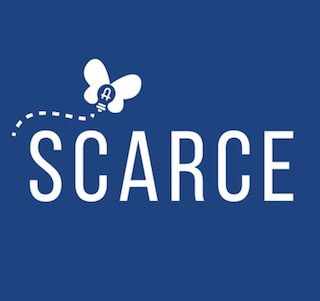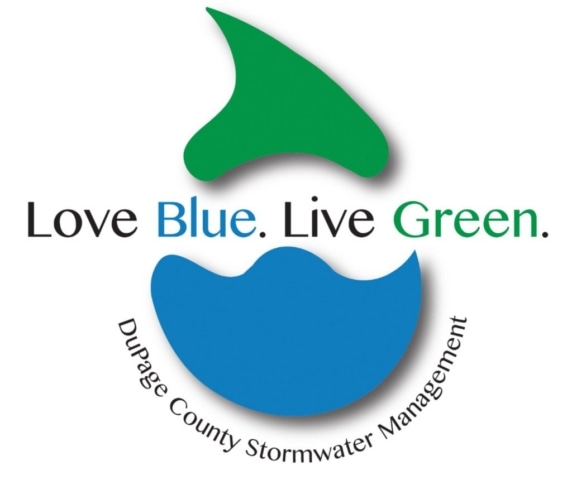Events, News, Programs,
Announcing the Winners of the 2021 Sustainable Design Challenge
May 27 2021
This spring the 2021 Sustainable Design Challenge continued for the second year in a row as a virtual event. Now in its 15th year, the competition challenges DuPage County high school students to create sustainable building and landscape models using environmentally friendly design principles. Local professionals in engineering, architecture, sustainability, and design serve as judges during the event, evaluating students’ designs, presentations, and innovation. Winners are selected in three categories and awarded cash prizes of up to $500 thanks to our business sponsors.
Participants were also provided opportunities to learn about sustainable infrastructure in use right here in DuPage County and the Chicago area. Our event partner, DuPage County Stormwater Management, provided video content for participants to explore eco-friendly design employed on the DuPage County Campus. Long-time sponsor Wight & Company hosted a live virtual tour of a local Leadership in Energy and Environmental Design (LEED) certified building.
Ultimately, nine student teams from four high schools participated including Glenbard West (Glen Ellyn), York Community (Elmhurst), Montini Catholic (Lombard), and Hinsdale Central. Entries included photos and a video presentation about their design. Judging took place online and the results were tallied. All of the participants deserve a hearty congratulations for their hard work on this project, especially given the extraordinary circumstances of the past year. You can explore a full gallery of all of the entries here.
Award winners were announced during the monthly DuPage County Stormwater Committee meeting on June 1st. SCARCE Founder Kay McKeen was joined by DuPage County Stormwater Committee Chair Jim Zay to recognize the student groups. The winning teams visited SCARCE to accept their awards from Executive Director Kay McKeen and the Sustainable Design Challenge directors, Carrie Horak and Jean Kent. We are excited to share this year’s award winners who went above and beyond for this competition.
Overall LEED Design and $500 prize: Solis Eco-Market by The Sustainable Squad
Madison Brown, Emily Baker, Emily Kunst, Erin Powers
York Community High School, Elmhurst
Sponsoring teacher: Bob Blaus
The Sustainable Squad designed Solis, an eco-friendly fresh market, on the site of a former gas station next to Salt Creek near downtown Elmhurst. Every detail of the building and site was thoughtfully designed to be eco-friendly, healthy, and low-impact. The site design includes remediating pollution, restoring the streambank, and landscaping with native plants and trees. The plantings along with permeable pavers, a green roof, rain barrels and cisterns all help to absorb stormwater. Collected rainwater is recycled in plumbing fixtures and to water plants indoors and out as needed. Among many energy features, the building is constructed with eco-friendly and efficient papercrete and hempcrete, and includes rooftop solar panels with a salt-water solar battery, and unique solar heating and cooling systems. Lighting needs are minimized by taking advantage of natural light provided by highly efficient windows. Outdoor lighting is designed to reduce light pollution. Water is saved indoors with highly efficient fixtures and outdoors by following xeriscaping principles to reduce watering needs. Employees are encouraged to bike to work thanks to bike racks and showers available on-site and patrons are incentivized to bring items for recycling or composting in return for discounts and coupons. Watch their project video here.
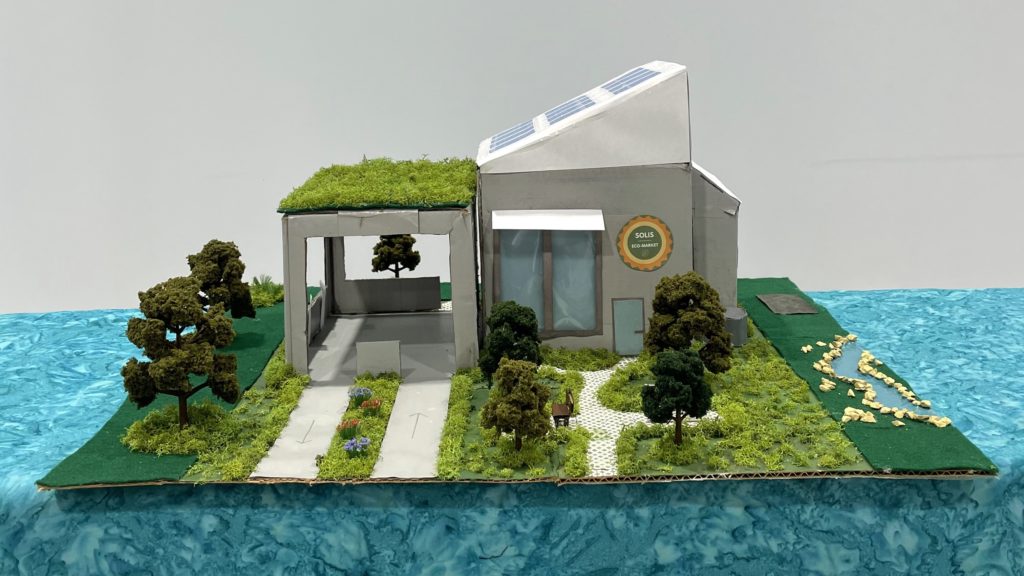
Solis Eco-Market designed by Madison Brown, Emily Baker, Emily Kunst, and Erin Powers from York Community High School. 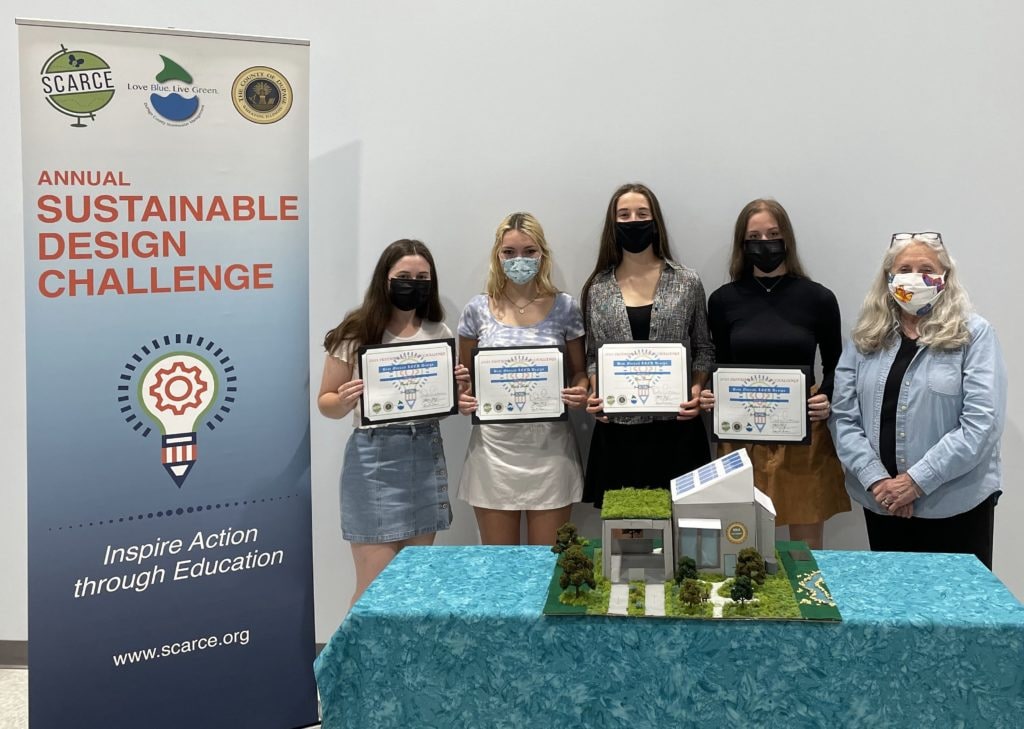
Emily Kunst, Emily Baker, Erin Powers, and Madison Brown display their awards with Kay McKeen, SCARCE Executive Director.
Best Stormwater Design and $250 prize: Art Museum by Environmental Queens
Sheril Mathew, Emily Eastman, Katie McCann, Samantha Trajcevski
York Community High School
Sponsoring teacher: Bob Blaus
The Art Museum designed by the team members of Environmental Queens has many features designed to absorb stormwater and thus reduce flooding and water pollution. Features start in the parking lot, which is designed to be more compact and made of grass paving blocks to allow water absorption into the ground. The landscape includes a bioretention area to hold and filter water for later release to a waterway. Large grassy areas will be converted to moss or native plants as well as an infiltration trench which will direct rainwater to a subsurface reservoir to hold water to slowly infiltrate into the ground. The building itself features a green roof and vertical gardens with rain chains to direct excess water to a storage tank. The collected rainwater will then be used to meet many of the water demands of the building and landscape, which will be minimized thanks to efficient fixtures and drought-resistant native plantings. Watch their project video here.
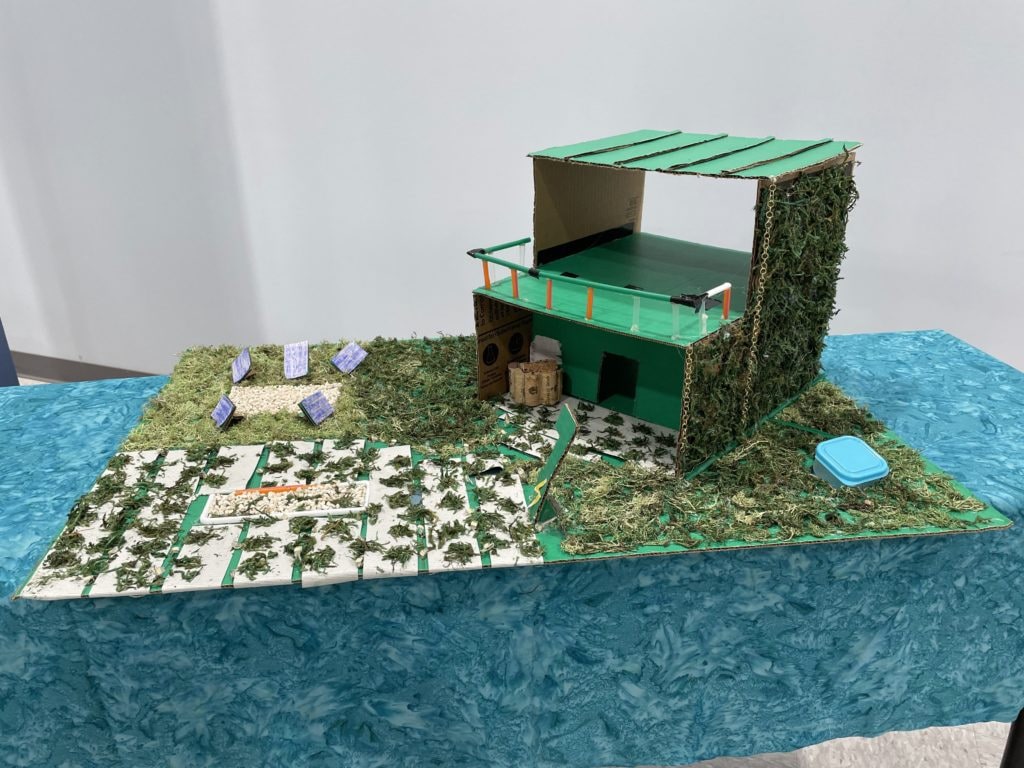
An art museum designed by Sheril Mathew, Emily Eastman, Katie McCann, and Samantha Trajcevski of York Community High School. 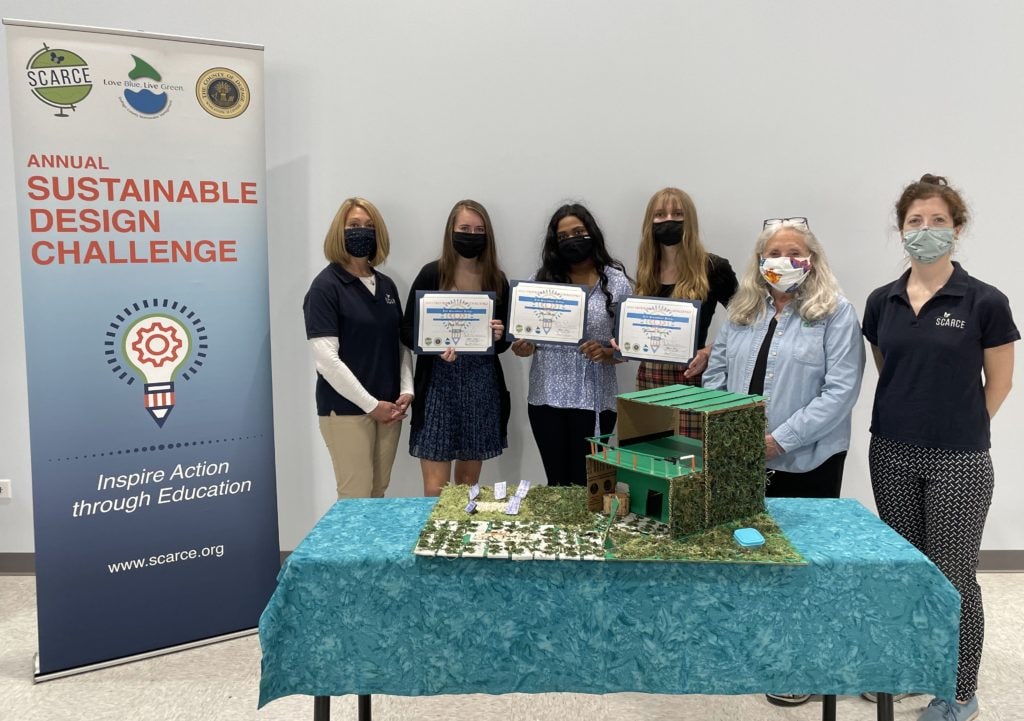
Jean Kent of SCARCE; Emily Eastman, Sheril Mathew, Samantha Trajcevski and Katie McCann (not pictured); Kay McKeen and Carrie Horak of SCARCE.
Best Energy Design and $250 prize: Maple Park Retirement Home by Helios
Adrian Zhuang, Kendall Dirks, Serena Jobi, Rose Menichini
York Community High School
Sponsoring teacher: Bob Blaus
Maple Park Retirement Home by Helios is rich with energy efficient features and renewable energy production. Green roofs on each building provide superior insulation along with silica aerogel insulation. Semi-transparent solar panels, daylight tubes, and highly efficient windows allow natural light to penetrate the building during the day. Partnered with LED fixtures and reflective walls, lighting needs are minimized around the clock. Outdoors, lights are directed downward to reduce wasted light and solar-powered, motion-activated street lamps light the parking lot. Efficient heating and cooling are provided by a geothermal system paired with solar thermal tiles, heat exchangers, and natural ventilation systems. The campus is an energy hub producing more power on-site than they need through a variety of methods: semi-transparent solar panels, space-conscious vertical wind turbines, an anaerobic digester, and a Stirling engine, which can be powered by either the anaerobic digester or the solar thermal tiles. In total, the facility is estimated to produce enough excess electricity to power 15 homes for a year. Watch their project video here.
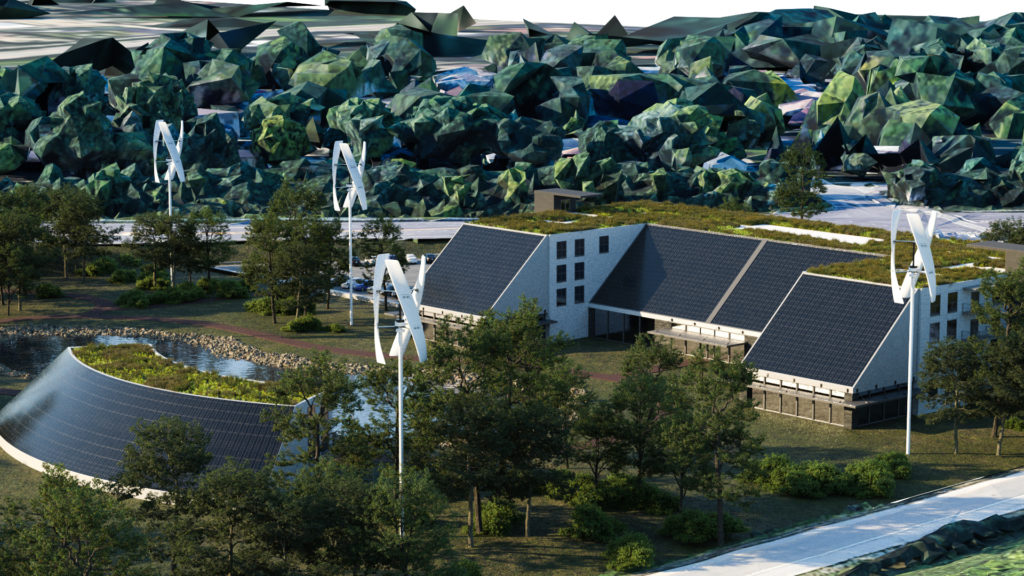
A digital rendering of Maple Square Retirement Community designed by Adrian Zhuang, Kendall Dirks, Serena Jobi, and Rose Menichini from York Community High School. 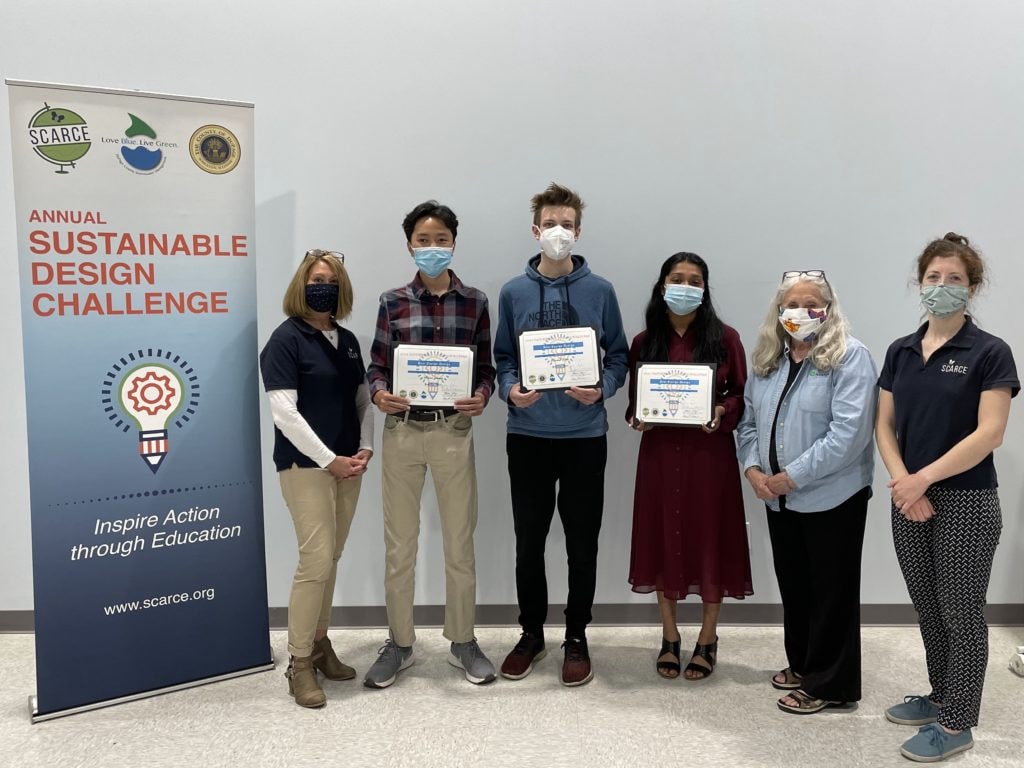
Jean Kent of SCARCE; Adrian Zhuang, Kendall Dirks, Serena Jobi, and Rose Menichini (not pictured); Kay McKeen and Carrie Horak of SCARCE.
Thank you to our event partner DuPage County Stormwater Management, our business sponsors, the professionals that volunteered their time as judges and the teachers that encouraged and guided their students to participate in this project. You can learn more about the Sustainable Design Challenge here.
Thank you to our 2021 business sponsors:




The Sustainable Design Challenge is a program of:
